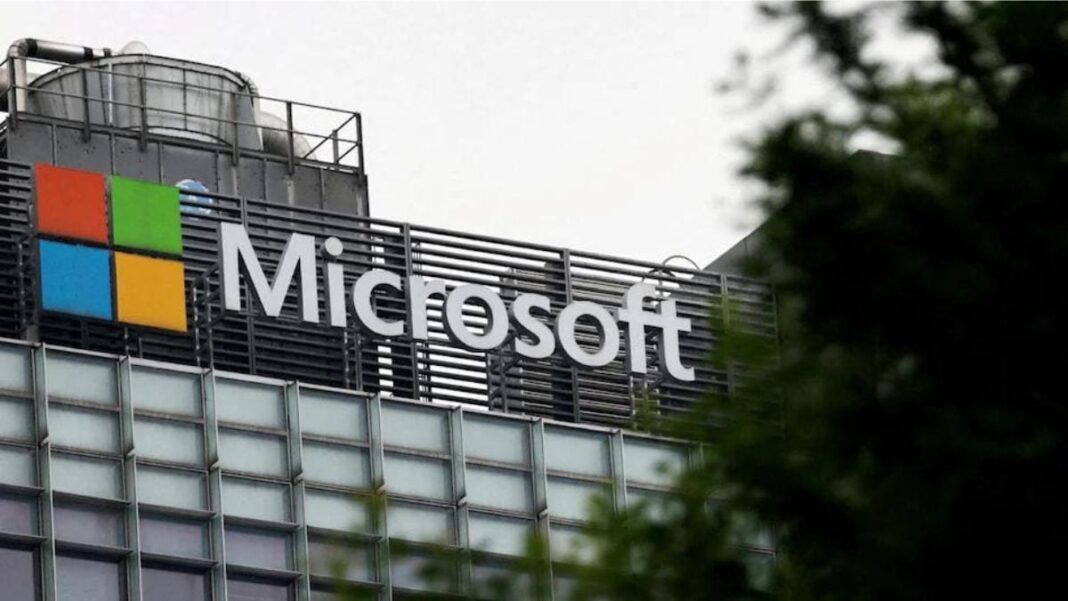Microsoft Shares Big AI Plans for 2025
In a world where technology continues to shape our future, Microsoft has unveiled its grand vision for the year 2025. The tech giant isn’t just focused on AI products; it’s all about laying the groundwork for a future driven by artificial intelligence. Let’s delve into the details of Microsoft’s ambitious plans and how they could potentially change the landscape of AI technology in the coming years.
The Story So Far
Imagine a world where AI isn’t just a buzzword but a reality that impacts every aspect of our lives. Microsoft’s vision for 2025 paints a picture of a future where AI infrastructure is robust, AI skills are widespread, and accessibility to this transformative technology is global. The company is investing a staggering $80 billion in AI-enabled data centers to train and deploy AI models, with a strong focus on empowering the next generation with AI skills.
A Quick Synopsis
Microsoft’s roadmap for 2025 is all about building a solid foundation for the widespread adoption of AI. From investing in cutting-edge technology to developing AI-focused curriculums for colleges, the tech giant is leaving no stone unturned in its quest to democratize AI. With a strong emphasis on skilling programs and global accessibility, Microsoft is paving the way for a future where AI is not just a tool but a way of life.
Detailed Review
Microsoft’s commitment to AI infrastructure is evident in its massive investment in AI-enabled data centers. These state-of-the-art facilities will serve as the backbone for training new AI models, deploying them globally, and powering Microsoft’s cloud-based AI applications. By investing heavily in infrastructure within the US, Microsoft is not only bolstering its own capabilities but also strengthening the AI ecosystem on home turf.
The company’s focus on skilling programs is equally commendable, with a vision to create the next billion AI-enabled jobs across various industries. By partnering with the US National AI Consortium for Community Colleges, Microsoft is ensuring that students have access to industry-aligned AI curriculums that equip them with in-demand skills. Additionally, the AI Bootcamps and teacher training programs are designed to nurture a new breed of AI professionals who are ready to tackle the challenges of tomorrow.
Microsoft’s global outreach extends beyond borders, with a commitment to expand its AI infrastructure to 40 countries, including the Global South. Collaborations with companies like G42 in Kenya highlight Microsoft’s efforts to make AI technology accessible to regions that are often left behind. By democratizing AI on a global scale, Microsoft is paving the way for a more inclusive and innovative future.
Conclusion
As we look ahead to 2025, Microsoft’s grand AI plans offer a glimpse into a future where technology knows no bounds. With a strong focus on infrastructure, skilling programs, and global accessibility, the tech giant is laying the foundation for a world where AI is not just a tool but a transformative force. By investing in the next generation of AI professionals and expanding its reach to underserved communities, Microsoft is shaping a future where the possibilities of AI are endless.
Frequently Asked Questions
1. How much is Microsoft investing in AI-enabled data centers for 2025?
Microsoft is investing approximately $80 billion in AI-enabled data centers to train and deploy AI models.
2. What industries will benefit from Microsoft’s AI skilling programs?
Industries such as services, manufacturing, transportation, agriculture, and government are expected to benefit from Microsoft’s AI skilling initiatives.
3. Which organization has Microsoft partnered with for developing AI curriculums for colleges?
Microsoft has partnered with the US National AI Consortium for Community Colleges to provide industry-aligned AI curriculums.
4. How is Microsoft planning to expand its AI infrastructure globally?
Microsoft is expanding its AI infrastructure to 40 countries, including the Global South, to make AI technology more accessible on a global scale.
5. What is the significance of Microsoft’s collaboration with G42 in Kenya for AI infrastructure?
Microsoft’s collaboration with G42 in Kenya highlights its commitment to making AI technology accessible to underserved regions.
6. How is Microsoft supporting the next generation of AI professionals through its skilling programs?
Microsoft is offering AI Bootcamps and teacher training programs to equip students and educators with in-demand AI skills.
7. What is the expected impact of Microsoft’s AI skilling programs on job creation?
Microsoft aims to create the next billion AI-enabled jobs across various industries through its skilling programs.
8. How does Microsoft plan to deploy AI models globally through its AI-enabled data centers?
Microsoft’s AI-enabled data centers will be used to train and deploy AI models globally, as well as power its cloud-based AI applications.
9. What is the focus of Microsoft’s AI vision for the fiscal year 2025?
Microsoft’s AI vision for 2025 focuses on investing in AI technology and infrastructure, supporting skilling programs, and making AI technology more accessible globally.
10. What is the significance of Microsoft’s investment in AI infrastructure within the US?
Microsoft’s investment in AI infrastructure within the US aims to strengthen the AI ecosystem and bolster the company’s capabilities on home turf.
Tags: Microsoft, AI, technology, infrastructure, skilling programs, global accessibility, AI-enabled data centers, future, innovation.

